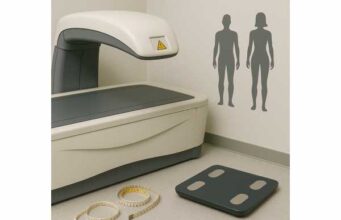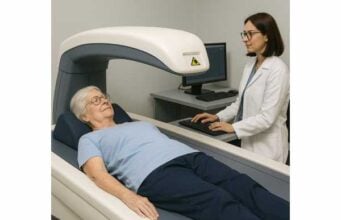Biomarkers and Tools
Home Biomarkers and Tools
Biomarkers, Tests and Wearables for Longevity
Longevity is not a single number—it is a system you can measure, guide, and improve. This guide translates complex lab panels, imaging, and wearables into a practical roadmap you can act on today. You will learn which biomarkers predict disease decades early, which tests truly change outcomes, and how to use home devices without drowning in data. We will also cover trade-offs—cost, false positives, and how to avoid overtreatment. If you want context for any topic we mention, explore our broader evidence-based longevity guides for step-by-step plans and deeper dives. Start with the fundamentals, then layer in testing based on your goals, baseline risk, and resources. The aim is simple: delay disease, extend healthspan, and make your future years more independent, energetic, and cognitively sharp.Table of Contents
Read the complete Longevity Biomarkers and Tools Guide
What to measure first
You do not need a thousand biomarkers to live longer and better. Start with a tight set that gives the greatest signal-to-noise for cardiometabolic disease, frailty, and premature death. A high-yield “first pass” includes: blood pressure measured correctly at home; fasting lipids with ApoB; metabolic labs (A1c and fasting glucose, optionally fasting insulin); kidney function (eGFR and urine albumin-to-creatinine ratio); an inflammation marker (high-sensitivity C-reactive protein, hs-CRP); and body composition or at least waist-to-height ratio. For most adults, adding a resting heart rate and heart rate variability (HRV) reading from a reliable wearable rounds out the picture. These tests are inexpensive, repeatable, and strongly linked to the diseases that most often shorten healthspan: atherosclerotic cardiovascular disease, type 2 diabetes, chronic kidney disease, and heart failure. Prioritize tests that change decisions. A biomarker is useful when (1) it is associated with meaningful outcomes, (2) you can modify it with lifestyle or treatment, and (3) the change improves health. ApoB clears that bar because lowering ApoB reduces events across trials and drug classes. Home blood pressure meets the same standard: lowering sustained high blood pressure reduces stroke, heart failure, and cognitive decline risk. On the flip side, some exotic panels generate noise without adding a clear intervention path. Frequency matters. After a baseline, recheck high-impact markers every 3–12 months depending on risk and whether you are changing therapy. For example, if you adopt a new nutrition plan or medication that affects glucose or lipids, re-testing at 8–12 weeks captures the early trajectory. For weight and waist data, monthly snapshots avoid obsessing over day-to-day fluctuations while still detecting trend shifts. A simple triage approach can guide sequencing:- Safety first: Rule out silent high-risk states—severely elevated blood pressure, very high ApoB, marked hyperglycemia, or abnormal kidney findings—because they drive urgent decisions.
- Big rocks next: Address sustained hypertension, excess visceral fat, and atherogenic lipids. These account for the majority of preventable cardiovascular events.
- Modifiers last: Tackle supportive targets such as sleep quality, nutrient gaps, and physical performance to consolidate gains.
Metabolic markers: glucose and insulin
Glucose regulation is central to healthspan. Elevated average glucose and insulin resistance accelerate vascular damage, fatty liver, kidney disease, and cognitive decline. Three complementary markers—A1c, fasting glucose, and fasting insulin—give a practical overview. A1c reflects average glucose over roughly 90 days. For longevity, many clinicians target an A1c in the low-to-mid 5s (%) if it can be achieved safely without hypoglycemia. A1c rises with age and varies by hemoglobin traits and conditions affecting red blood cell turnover, so interpret outliers in context. If anemia, hemoglobin variants, or recent blood loss are present, lean more on fasting or post-meal measures. Fasting glucose captures hepatic (liver) glucose output and baseline insulin sensitivity. Values in the mid-80s to low-90s mg/dL often accompany better cardiometabolic profiles than the upper-normal range, though “optimal” is individual. Temporary elevation can result from poor sleep, stress, heavy alcohol intake, or acute illness. Repeat on a quiet morning before changing your plan. Fasting insulin or a HOMA-IR (calculated from fasting glucose and insulin) adds depth. Persistently high insulin with normal glucose suggests compensation—your pancreas is working overtime to hold glucose down. That pattern often precedes visible glucose deterioration and tends to track with visceral fat, high triglycerides, and low HDL. When do you need dynamic testing? If fasting numbers are borderline or you suspect post-meal spikes, consider a structured post-meal check once a week: measure glucose at 0, 60, and 120 minutes after a typical high-carb meal, noting peak and return to baseline. Large peaks (>160–180 mg/dL) or prolonged elevations (>140 mg/dL at 2 hours) argue for meal composition and activity adjustments. Practical levers that move these markers:- Weight and waist reduction when abdominal adiposity is present.
- Dietary pattern emphasizing minimally processed foods, adequate protein, and fiber; distribute carbohydrates around activity.
- Meal timing that avoids late-night heavy meals.
- Activity nudges—10–15 minutes of post-meal walking can blunt glucose excursions.
- Sleep and stress—improving sleep efficiency and managing stress reduce counter-regulatory hormones that push glucose up.
Lipids that predict risk
Atherosclerosis—the process behind heart attacks and strokes—progresses silently for decades. Particles carrying cholesterol into the artery wall, especially apoB-containing lipoproteins, are the key drivers. That makes ApoB the most direct, decision-shaping lipid marker for longevity. It counts the number of atherogenic particles (VLDL remnants, IDL, LDL, and Lp(a)) irrespective of how much cholesterol they carry. Lower ApoB generally means fewer particles penetrating and lingering in the arterial wall. Non-HDL cholesterol approximates the cholesterol content of those particles and is a strong, widely available surrogate when ApoB is not measured. For many adults without advanced disease, pushing ApoB and non-HDL lower reduces risk in a graded fashion; the “right” target depends on overall risk, age, family history, and personal preferences. Lipoprotein(a), or Lp(a), is a genetically determined LDL-like particle with an attached apolipoprotein(a). High Lp(a) increases lifetime risk independent of standard lipids. Since levels are stable from adolescence, one lifetime measurement is often enough unless you change assays or start specific therapies in the future. If your Lp(a) is high, you can compensate by lowering ApoB more aggressively and controlling other risks. Interventions that move the needle:- Nutrition: Prioritize protein and fiber, reduce trans fats and excess refined carbs that elevate triglyceride-rich particles in some people.
- Weight and waist: Visceral fat loss lowers VLDL and ApoB.
- Physical activity: Mix resistance and aerobic training; both improve triglycerides and HDL function.
- Medications (if indicated): Statins, ezetimibe, bempedoic acid, and PCSK9 inhibitors all reduce ApoB to varying degrees; niacin is generally avoided for routine use due to side effects and limited outcome benefit.
Blood pressure: home and ambulatory
Few numbers change destiny like blood pressure. Because clinic readings can be misleading—white-coat elevations or masked hypertension—home blood pressure monitoring (HBPM) and, when needed, ambulatory blood pressure monitoring (ABPM) provide truer risk signals. Home monitoring: Use a validated upper-arm cuff that fits your arm. Sit quietly for five minutes, feet on the floor, back supported, arm at heart level. Take two readings one minute apart in the morning and evening for a week, then average them. Avoid caffeine, exercise, or nicotine for 30 minutes beforehand. Store the device and log in one place so the routine sticks. Targets: For longevity, aiming for an average systolic in the 110s–120s mmHg and diastolic in the 70s–low-80s is reasonable for many adults, provided you feel well and do not experience dizziness or falls. Individual targets should reflect age, comorbidities, medications, and side-effect tolerance. Symptoms or low readings merit discussion with your clinician—overtreatment can harm. Ambulatory monitoring (24-hour): ABPM is invaluable if home readings are inconsistent, if you have suspected masked hypertension (normal in clinic, high outside), or to assess nighttime dipping. Non-dipping or nocturnal hypertension raises cardiovascular risk even when daytime numbers look fine. ABPM can also help separate true resistant hypertension from white-coat effects. Lifestyle levers: Losing excess abdominal fat, adding aerobic activity, limiting sodium (especially if salt-sensitive), prioritizing potassium-rich foods, moderating alcohol, improving sleep, and managing stress all move blood pressure in the right direction. For sleep apnea, proper diagnosis and treatment can be a game changer. Medication strategy: If lifestyle is not enough or baseline risk is high, combination therapy at low doses often provides better control with fewer side effects than maxing out a single drug. Monitor electrolytes and kidney function after starting or changing therapy. Cadence: If readings are high or medications are changing, measure daily for a week each month; otherwise, a 3–7-day check each quarter keeps you calibrated. Bring your cuff to clinic visits to compare with their device and ensure accuracy. For step-by-step setup, validated device lists, and troubleshooting, start with our guides to home blood pressure for longevity and to when 24-hour monitoring matters. Back to top ↑Body composition and muscle
Healthy aging depends on preserving muscle and minimizing excess visceral fat. Weight alone cannot tell you whether you are gaining lean mass, losing bone, or trading muscle for fat. Two pragmatic approaches are best: waist-to-height ratio (a quick proxy for visceral fat) and body composition assessment to guide training and nutrition. Waist-to-height: Aim for a waist circumference less than half your height. It tracks with insulin resistance, fatty liver, and cardiovascular risk more closely than BMI in many populations. Measure at the level of the navel after exhaling gently; keep the tape horizontal and snug but not compressing the skin. DEXA vs BIA vs tape:- DEXA (dual-energy X-ray absorptiometry) estimates fat distribution, visceral adipose tissue, lean mass by region, and bone mineral density. It is the gold standard for practical body composition tracking, though results vary by machine and hydration.
- BIA (bioelectrical impedance) scales are convenient but sensitive to hydration, meal timing, and device algorithms; they are best for trend direction, not absolutes.
- Tape plus a scale can estimate fat changes when used consistently with the same protocol; pair with progress photos and strength logs to keep expectations grounded.
- Progressive resistance training 2–4 days per week focused on compound lifts, plus single-leg and pulling patterns for balance and posture.
- Protein of ~1.2–1.6 g/kg/day (higher during weight loss or late-life), spread across 2–4 meals with ~25–40 g per meal to hit the leucine threshold for muscle protein synthesis.
- Creatine monohydrate (if appropriate) supports strength and lean mass with a strong safety profile for most adults.
- Sleep and recovery matter as much as training volume; inadequate sleep blunts anabolic signaling and impairs fat loss.
Inflammation markers for aging
Chronic, low-grade inflammation (“inflammaging”) accompanies many diseases of aging. It also reflects modifiable drivers—excess visceral fat, poor sleep, sedentary time, periodontal disease, smoking, air pollution exposure, and poorly controlled blood pressure or glucose. A practical lab for longitudinal tracking is high-sensitivity C-reactive protein (hs-CRP). Why hs-CRP? It is inexpensive, widely available, and responsive to lifestyle change. While it does not diagnose a cause, downward drift over months often parallels improvements in adiposity, fitness, and metabolic control. Interpreting hs-CRP requires context: infection, injury, intense exercise, or active autoimmune disease can transiently elevate it. If a result is unexpectedly high, repeat in two weeks under quiet conditions. Other markers: Interleukin-6 (IL-6), fibrinogen, Lp-PLA2, and GlycA appear in research and some clinical panels, but they add limited actionability for most people compared with hs-CRP plus risk-driving fundamentals. White blood cell count and ferritin (an acute-phase reactant) can also shift with inflammation; interpret together with iron studies and clinical context. Levers that lower chronic inflammation:- Reduce visceral adiposity: Waist loss consistently drops hs-CRP.
- Activity: Both aerobic and resistance training lower inflammatory tone independent of weight.
- Sleep: Consistent sleep windows and treating sleep apnea reduce inflammatory markers.
- Nutrition: Fiber-rich diets, adequate omega-3 intake, and limiting ultra-processed foods support lower CRP.
- Oral health: Treat periodontal disease; gum inflammation can raise systemic markers.
- Environmental: Reduce smoke exposure; consider air filtration if pollution is high.
- Medical: Control blood pressure, glucose, and lipids; unaddressed hypertension and hyperglycemia feed vascular inflammation.
Kidney and liver screening
Your kidneys and liver are silent workhorses that often fail quietly—and both provide early warning signs you can measure. For kidneys, the two anchors are estimated glomerular filtration rate (eGFR) and urine albumin-to-creatinine ratio (ACR). eGFR estimates how much blood your kidneys filter each minute; trends matter more than a single number. ACR detects microscopic protein leakage that predicts cardiovascular and renal events even when eGFR looks “normal.” Together, eGFR and ACR stratify risk, guide blood pressure and glucose targets, and cue medication choices (e.g., SGLT2 inhibitors in diabetes with albuminuria). If eGFR is borderline (e.g., 60–75 mL/min/1.73 m²), repeat in 3–6 months and assess hydration, medications (NSAIDs), and blood pressure patterns before labeling chronic kidney disease (CKD). Creatinine, the usual input for eGFR, can be skewed by muscle mass and diet. If your build is atypical (very muscular or very lean), or results conflict with the clinical picture, cystatin C–based eGFR can improve accuracy. For ACR, collect a first-morning urine when possible; intense exercise, fever, or urinary tract infections can transiently elevate albumin and confuse interpretation. If ACR is elevated, confirm on at least two of three tests over several months before acting on it. Kidney levers that move outcomes:- Blood pressure: If you have hypertension, controlling systolic BP has outsized impact on kidney and heart outcomes.
- Glucose: Tightening average glucose reduces microvascular injury in diabetes.
- Medications: ACE inhibitors or ARBs lower intraglomerular pressure and albuminuria; SGLT2 inhibitors slow CKD progression in diabetes and some non-diabetic CKD.
- Lifestyle: Reduce excess sodium, avoid chronic NSAID use when possible, stay active, and manage weight and sleep.
- Weight and waist: Losing 7–10% of body weight typically reduces liver fat and can regress fibrosis in early disease.
- Carbohydrate quality: Limiting sugar-sweetened beverages and refined starches reduces hepatic de novo lipogenesis.
- Protein-forward meals help preserve lean mass during fat loss.
- Activity: Both aerobic and resistance training reduce liver fat independent of weight change.
- Cardiometabolic control: Statins are safe in MASLD and reduce cardiovascular risk—the leading cause of death in this population.
- Alcohol: Even “moderate” intake can aggravate steatohepatitis in susceptible individuals; personalize goals.
Nutrient status that matters
Micronutrient testing is a common rabbit hole. Most panels return a mix of marginal “lows” that do not change outcomes. Focus on a handful of nutrients with clear links to function, simple tests, and actionable fix paths: iron stores, vitamin D, B12/folate status, and—optionally—omega-3 index if cardiovascular prevention is a priority. Iron and ferritin: Iron deficiency undermines energy, cognition, and exercise capacity; iron overload damages the liver and raises cardiometabolic risk. A minimal panel includes ferritin, serum iron, transferrin saturation (TSAT), and complete blood count. Ferritin <30–50 ng/mL with low TSAT suggests deficiency; very high ferritin with TSAT >45% suggests iron overload and merits evaluation for causes (inflammation, alcohol, MASLD, hemochromatosis). For endurance athletes, menstruating individuals, and those with heavy donors’ history, iron deficiency without anemia is common and treatable. Correct the cause (diet quality, absorption issues, bleeding), then replete and monitor. For interpretation steps and when to treat, see iron and ferritin. Vitamin D (25-hydroxyvitamin D): This test is simple and interpretable; aim for a middle range that supports musculoskeletal health without overshooting. Many programs target ~30–50 ng/mL, adjusting intake by sun exposure, body size, and baseline level. Supplement cautiously if you have kidney stones, granulomatous disease, or high calcium. Recheck 8–12 weeks after a dose change to confirm the new steady state. Our practical testing and dosing guide is here: vitamin D status in healthy aging. B12, folate, and homocysteine: B12 deficiency can mimic cognitive decline and neuropathy. Serum B12 alone can be misleading; if results are borderline or symptoms exist, add methylmalonic acid or homocysteine (the latter also rises with folate deficiency and hypothyroidism). Metformin, acid suppressants, and plant-predominant diets increase risk. Treating clear deficiency is low risk and high reward; avoid megadoses unless indicated. Omega-3 index (EPA+DHA in red blood cells): A higher index (often ≥8%) is associated with lower risk in observational cohorts, and improving the index is straightforward—dietary fish or supplements. Use this if you want a concrete behavioral target; otherwise, simply eat fatty fish twice weekly. Testing every 3–6 months during changes can be motivating. Cadence and context: Test only when the result will change your plan. If you are asymptomatic with a diverse diet and no risk factors, annual vitamin D (if supplementing) and iron studies (if at risk of deficiency or overload) are reasonable. For plant-predominant eaters or those on metformin, add annual B12. For cardiovascular focus, consider an omega-3 index baseline and after dietary shifts. Pitfalls to avoid:- Treating lab numbers instead of people—correct symptoms and root causes, not just ranges.
- Over-supplementing fat-soluble vitamins or iron “just in case.”
- Ignoring co-factors: inadequate protein and energy intake blunt responses to micronutrient repletion.
Genetics and advanced tests
Genetics can guide prevention, but not all tests deserve space in your budget. Start with actionable genetics—variants with clear management implications. For cardiovascular and brain aging, two standouts are APOE and pharmacogenomics panels relevant to lipid, antihypertensive, and antiplatelet therapy. APOE ε4 raises lifetime risk for Alzheimer’s disease and accelerates atherosclerosis in some people; the utility is not in predicting destiny but in motivating earlier, aggressive risk control (ApoB, blood pressure, sleep, activity) and in caution with head injury, alcohol, and poorly controlled sleep apnea. Pharmacogenomics can flag clopidogrel nonresponse (CYP2C19 loss-of-function) or statin myopathy risk (SLCO1B1 variants) and inform drug choice. Coronary artery calcium (CAC) is not genetics but functions like a biological age stamp for your arteries. A CAC of zero in midlife suggests low 10-year event risk; detectable calcium reclassifies you upward and strengthens the case for LDL/ApoB lowering and lifestyle intensity. CAC does not replace lipids; it puts your current burden of disease on the table. If you do CAC, focus on the management decision it informs—therapy intensity, not chasing the number every year. For when to scan and how to act on scores, see coronary artery calcium for longevity. Beyond these, use selective advanced testing when a clinical question is on the line:- Lipoprotein(a) genotyping is redundant if you have a reliable Lp(a) level; phenotype drives decisions.
- Polygenic risk scores (PRS) for coronary disease modestly reclassify risk; they are most helpful if they motivate adherence when traditional risk tools feel abstract.
- Bone density (DEXA) deserves a place if you are at risk for osteoporosis or you are planning aggressive weight loss; fracture prevention is longevity.
- Microbiome testing is mostly research-grade; skip for now unless part of a supervised protocol.
Glucose challenges and CGM
When fasting labs leave questions, two tools answer them: standardized glucose challenges and continuous glucose monitoring (CGM). Each illuminates different aspects of glucose control—how high you spike, how quickly you recover, and how variable your days are. Oral glucose tolerance test (OGTT) vs mixed-meal test (MMT): The OGTT uses 75 g of glucose in a controlled setting with measurements at fasting, 1 hour, and 2 hours. It is standardized and diagnostic for diabetes and impaired glucose tolerance. The MMT uses a realistic meal (e.g., 50–75 g carbohydrate with fat and protein), capturing how your body handles everyday eating. If your goal is diagnosis or you need a uniform baseline before and after an intervention, OGTT is preferred. If you want practical insights to adjust meal composition and timing, MMT is more applicable. For choosing dose, timing, and interpretation thresholds, see our comparison of OGTT and mixed-meal testing. CGM basics: A well-placed CGM translates daily life into data: peaks, duration above range, nighttime stability, and responses to stress, sleep loss, alcohol, and exercise. For non-diabetic users, the goals are educational: minimize unnecessary large excursions, stabilize nights, and build meal and activity patterns that keep energy and appetite steady. The most helpful metrics are:- Time in range—customized for non-diabetic use (for example, 70–140 mg/dL).
- Glycemic variability—coefficient of variation <36% is a common target.
- Peak amplitude and area under the curve after typical meals.
- Wear the sensor for at least 10–14 days, including weekdays and weekends.
- Keep a simple log: meal type, portion roughness, activity, sleep, alcohol, and stressors.
- Test meal “swaps” head-to-head: same calories, different order or composition (e.g., protein-first vs carb-first; walk vs no walk).
- Treat outliers as experiments, not grades; many people spike on sushi, pizza, and cereal regardless of fitness level.
- High fasting + high post-meal suggests hepatic and peripheral insulin resistance—prioritize weight/waist loss, sleep consistency, and activity.
- Normal fasting + high post-meal points to early peripheral insulin resistance or low muscle glucose uptake—add resistance training and meal composition work.
- Large late-night rises often reflect late meals, alcohol, or poor sleep; moving dinner earlier and taking a short walk often helps.
Sleep, heart rate and HRV
Sleep quality, resting heart rate (RHR), and heart rate variability (HRV) form a recovery triad that influences glucose control, blood pressure, appetite signaling, and mood. Modern wearables make tracking easy, but not all numbers are equally actionable. Sleep measurement: Consumer wearables estimate sleep stages with moderate accuracy; use them for trends, not medical diagnoses. The most valuable outputs are time in bed, sleep regularity (consistent sleep and wake times), and sleep efficiency (time asleep/time in bed). Instead of chasing perfect REM percentages, focus on a stable weekly rhythm and adequate duration (often 7–9 hours for adults). If your partner notes loud snoring, witnessed apneas, or you wake unrefreshed with morning headaches, screen for sleep apnea—untreated apnea worsens blood pressure, insulin resistance, and arrhythmia risk. Resting heart rate: A lower RHR (within healthy bounds) often reflects better cardiorespiratory fitness and recovery. Track your lowest nightly RHR and the weekly average. Upward drifts can herald illness, overreaching in training, dehydration, or stress. When RHR rises alongside poor sleep and irritability, back off intensity for a few days and address hydration and carbs around training. HRV: HRV reflects beat-to-beat variability driven by autonomic balance. Higher HRV (for you) generally signals better recovery and resilience; your baseline matters more than population comparisons. Look for rolling averages, not daily spikes. Sudden drops often coincide with poor sleep, alcohol, or high psychosocial load. HRV naturally declines with age and varies across the menstrual cycle; interpret in context, not as a moral score. Turning data into action:- Consistency beats hacks: Regular bedtime, daylight exposure in the morning, and wind-down routines do more than supplements.
- Caffeine and alcohol curfews: Stop caffeine 8+ hours before bed and limit alcohol, especially late.
- Temperature and light: Cool, dark rooms improve sleep efficiency; use dimmer evening light and screen filters.
- Training periodization: Align intense sessions with higher HRV days, but do not let HRV veto your plan; use it to nudge volume, not cancel movement.
Simple at-home metrics
Not every longevity lever needs a lab. A handful of home metrics can guide decisions with surprising precision: Waist-to-height ratio (WHtR): Aim for a waist circumference less than half your height. This proxy for visceral fat tracks with cardiometabolic risk more reliably than BMI in many settings. Measure at the navel after a normal exhale; log monthly, not daily, to see true trends. For measurement technique and troubleshooting, use our step-by-step primer on waist and height ratio. Resting heart rate and blood pressure: Morning RHR in the low 50s–60s (athletes may be lower) often indicates good fitness; sustained increases signal stress, illness, or overreaching. Pair with quarterly home blood pressure “weeks” to keep your vascular risk calibrated. Functional tests you can repeat:- Grip strength: Use a dynamometer if available; improvements signal better overall strength and correlate with lower mortality risk.
- Five-times sit-to-stand: Time to stand up and sit down five times without using hands; faster is better.
- Gait speed over 4–6 meters: Slower speeds predict frailty and falls; training can improve it.
- One-leg balance: Target 20–30 seconds eyes open; practice safely.
- Monthly: Waist, balance test, sit-to-stand, 6-minute walk or step test.
- Quarterly: Home BP week, training plan review, sleep schedule audit.
- Semiannual: Labs you are actively improving (ApoB, A1c, hs-CRP).
- Annual: Kidney and liver screening, functional test battery, bone density if at risk.
References
- 2. Diagnosis and Classification of Diabetes: Standards of Care in Diabetes—2024 (2023) (Guideline)
- KDIGO 2024 Clinical Practice Guideline for the Evaluation and Management of Chronic Kidney Disease (2024) (Guideline)
- 2023 ESH Guidelines for the management of arterial hypertension (2023) (Guideline)
- AASLD Practice Guidance on the clinical assessment and management of nonalcoholic fatty liver disease (2023) (Guideline)
- APOLIPOPROTEIN B: Bridging the gap between evidence and practice (2024) (Systematic Review)


























